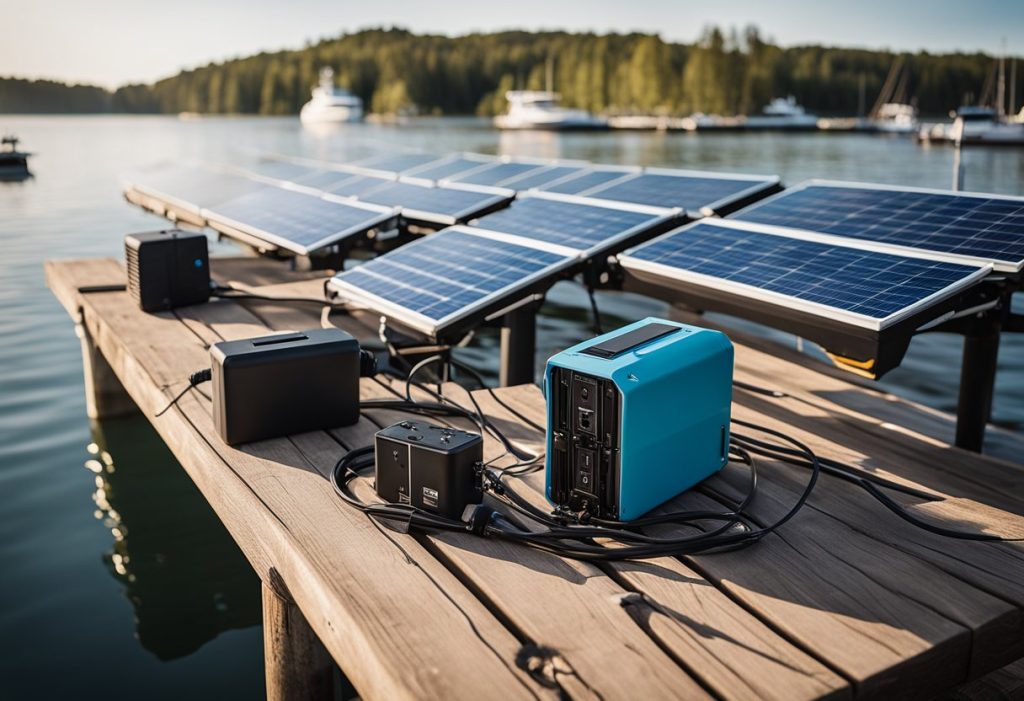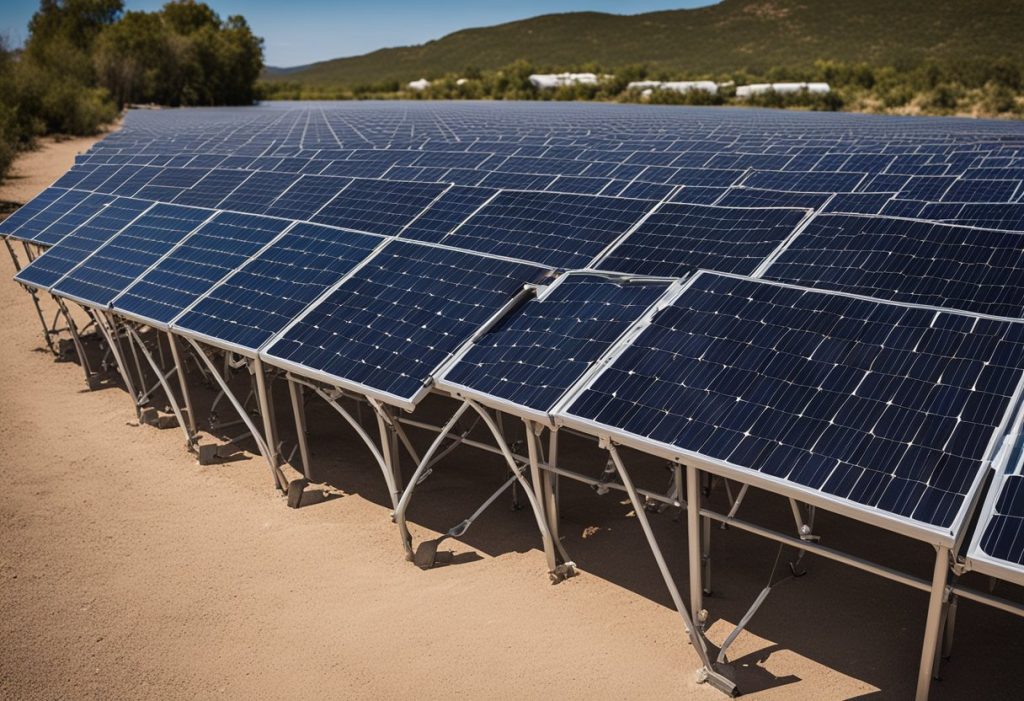Solar Powered Portable Power Stations for RVs and Boating: The Ultimate Guide
As an avid RV enthusiast, I know the importance of having access to reliable power while on the road. Whether you're camping in the middle of nowhere or parked at an RV park, having a source of electricity is crucial. That's where solar-powered portable power stations for rvs and boating come in. These innovative devices harness the power of the sun to provide clean, renewable energy wherever you go.

Understanding solar power can be a bit daunting, but it's important to know the basics before investing in a solar-powered portable power station. Essentially, solar power is generated by converting sunlight into electricity using photovoltaic cells. These cells are typically made of silicon and are arranged in panels that are mounted on a roof or other surface that receives direct sunlight. The electricity generated by the panels can be stored in a battery for later use.
Solar-powered portable power stations are a game-changer for RVers and boaters alike. These compact devices are designed to be lightweight and easy to transport, making them ideal for use on the go. They come equipped with built-in solar panels or can be charged using an external solar panel, and many models also have the ability to charge via a standard wall outlet or car charger. With a solar-powered portable power station, you can enjoy all the comforts of home no matter where your travels take you.
Key Takeaways
- Solar-powered portable power stations are an excellent source of clean, renewable energy for RVers and boaters.
- Understanding the basics of solar power is important before investing in a solar-powered portable power station.
- These innovative devices are designed to be lightweight and easy to transport, making them ideal for use on the go.
Understanding Solar Power

As someone who enjoys RVing and boating, I understand the importance of having a reliable power source while on the go. Solar power is one of the most popular options for powering portable power stations used in these situations. In this section, I will discuss how solar power works and the benefits of using it.
How Solar Power Works
Solar power works by converting sunlight into electricity through the use of solar panels. Solar panels are made up of photovoltaic (PV) cells that absorb sunlight and convert it into direct current (DC) electricity. This DC electricity is then sent to an inverter, which converts it into alternating current (AC) electricity that can be used to power appliances.
Portable power stations that use solar power typically have built-in solar panels or can be connected to external panels. The solar panels charge the battery inside the power station, which can then be used to power appliances when needed.
Benefits of Solar Power
Using solar power for portable power stations has several benefits. Here are a few:
- Renewable energy source: Solar power is a renewable energy source, meaning it is sustainable and will never run out.
- Cost-effective: Once installed, solar panels require little maintenance and can provide free electricity for years to come.
- Environmentally friendly: Solar power produces no emissions, making it a clean and environmentally friendly option for powering appliances.
- Quiet operation: Solar power is a silent power source, making it ideal for use in RVs and boats where noise can be a concern.
Overall, solar power is a reliable and sustainable option for powering portable power stations used in RVs and boats. By understanding how solar power works and the benefits it provides, you can make an informed decision when choosing a portable power station for your next adventure.
Solar Powered Portable Power Stations
As an avid RV and boating enthusiast, I know how important it is to have reliable and portable power sources. That's why I highly recommend investing in a solar-powered portable power station. Not only are they eco-friendly, but they also provide a convenient source of power for all your electronic devices on the go.
Key Features
When shopping for a solar-powered portable power station, there are a few key features to keep in mind. First and foremost, consider the battery capacity. The larger the battery, the more power it can store and provide. It's also important to look for a power station with multiple output ports, including USB and AC, to ensure compatibility with all your devices.
Another important feature to consider is the charging speed. Some power stations can take hours to fully charge, while others offer fast charging capabilities. Additionally, look for a power station with built-in solar panels or the ability to connect to external panels for easy recharging.
Top Brands
There are a variety of top brands offering solar-powered portable power stations for RVs and boating. Here are a few of my favorites:
EcoFlow
EcoFlow offers a range of portable power stations with sophisticated designs, easy-to-use displays, and fast charging capabilities. Their DELTA Mini model is lightweight and one of the fastest on the market, making it a great option for RV and boating enthusiasts.
Jackery
Jackery is another top brand offering high-quality solar-powered portable power stations. Their Explorer 1000 model is a best overall choice, offering a large battery capacity and multiple output ports.
Goal Zero
Goal Zero is a well-known brand in the portable power station market, offering a range of models with varying battery capacities and features. Their Yeti 200X Solar Generator is a great portable option, featuring a compact design and fast charging capabilities.
Investing in a solar-powered portable power station is a smart choice for any RV or boating enthusiast. With a variety of top brands and key features to consider, you're sure to find the perfect power station for your needs.
Application in RVs and Boating
As an avid RV and boating enthusiast, I know firsthand the importance of having a reliable source of power when traveling off-grid. Solar-powered portable power stations have become increasingly popular in recent years due to their ability to provide clean and sustainable energy. In this section, I will discuss how to install and maintain these power stations in RVs and boats.
How to Install
Installing a solar-powered portable power station in your RV or boat is a straightforward process. First, you will need to decide on the ideal location for the solar panels. It is recommended to choose a spot that receives plenty of sunlight and is easily accessible for maintenance. Once you have chosen the location, you can mount the solar panels using brackets or adhesive.
Next, you will need to connect the solar panels to the power station. Most portable power stations come with a built-in charge controller, which regulates the amount of power flowing from the solar panels to the battery. Simply connect the solar panels to the charge controller using the provided cables.
Finally, you can connect your devices to the power station using the built-in AC outlets, USB ports, or DC ports. Some power stations also come with a built-in inverter, which allows you to power devices that require AC power.
Maintenance Tips
Proper maintenance is crucial for ensuring the longevity and efficiency of your solar-powered portable power station. Here are some tips to keep in mind:
- Clean the solar panels regularly to remove any dirt or debris that may obstruct sunlight.
- Check the battery level regularly and recharge the power station as needed.
- Store the power station in a cool and dry place when not in use.
- Avoid overloading the power station by exceeding the recommended power output.
- Use a surge protector when connecting sensitive devices to the power station.
By following these simple tips, you can ensure that your solar-powered portable power station provides reliable and sustainable energy for all your off-grid adventures.
Frequently Asked Questions
What is the best portable power station for RV and boating needs?
The best portable power station for RV and boating needs depends on your power requirements. You should consider the capacity of the power station, the number and type of outputs, and the charging options. The Jackery Explorer series and the Goal Zero Yeti series are popular options that offer a range of capacities and features.
How do I choose the right portable solar panel kit for my RV or boat?
When choosing a portable solar panel kit for your RV or boat, you should consider the wattage of the panels, the size and weight, and the compatibility with your power station or battery. The Renogy 100 Watt Solar Panel Suitcase and the Zamp Solar 140-Watt Portable Solar Panel are good options that are easy to set up and produce enough power to keep your battery charged.
Can a portable power station charge a boat battery?
Yes, a portable power station can charge a boat battery if it has a DC output that matches the voltage of your battery. You can use a DC to DC cable to connect the power station to the battery. However, it is important to check the specifications of your power station and battery to ensure compatibility.
What are the benefits of using Zamp Portable RV Solar Panels?
Zamp Portable RV Solar Panels are a popular choice for RV and boating enthusiasts because they are lightweight, durable, and easy to set up. They also feature a built-in charge controller that regulates the voltage and protects your battery from overcharging. Additionally, Zamp Solar offers a range of panel sizes and wattages to suit different power requirements.
How many solar panels do I need to power my boat?
The number of solar panels you need to power your boat depends on your power requirements and the size of your battery bank. As a general rule, you should aim for a solar panel wattage that is equal to or greater than the battery bank capacity. For example, if you have a 200Ah battery bank, you should aim for at least 200 watts of solar panels.
Is it possible to run an RV completely on solar power?
It is possible to run an RV completely on solar power, but it depends on your power requirements and the size of your solar panel and battery bank. You will need to calculate your daily power consumption and choose a solar panel and battery bank that can meet your needs. It is also important to use energy-efficient appliances and devices to minimize your power usage.
